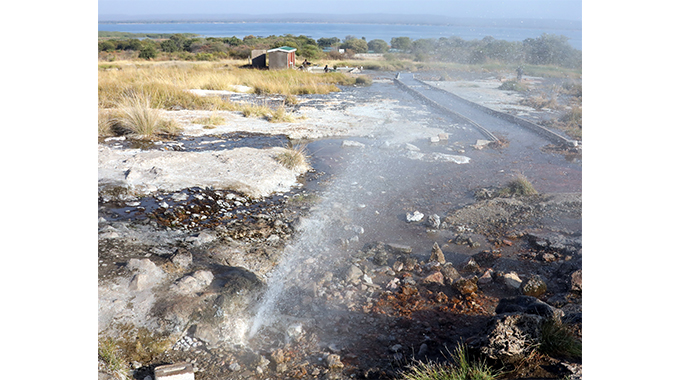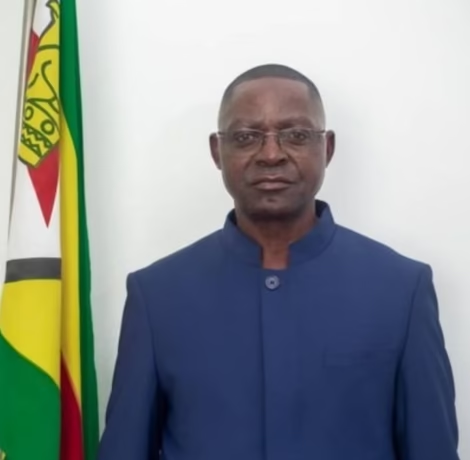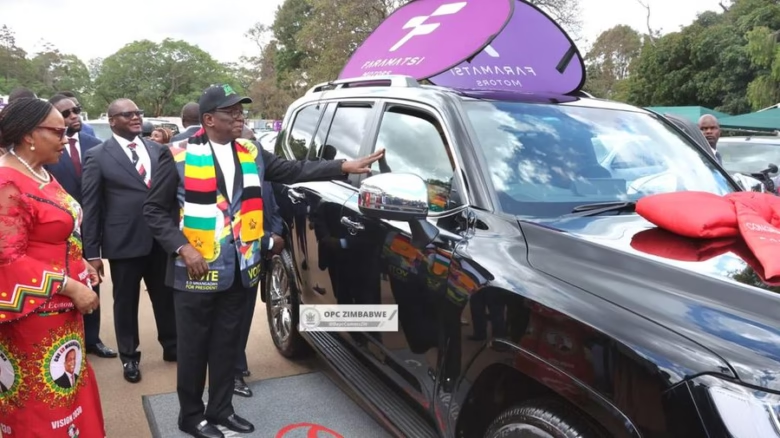
DEEP in the remote district of Binga in Matabeleland North province lies the magic of Chimbwatata Hot Springs, a mineral-rich water source heated by the earth’s core and bubbling to the surface.
Surrounded by clumps of yellow grass, and blankets of wildflowers, Chimbwatata Hot Springs are a natural wonder that continues to attract hordes of local and international tourists, particularly those looking for a therapeutic soak in bubbling hot water.

The springs discharge hot water like a fountain, and in the process creating puffs of steam. Water flowing from the Chimbwatata Hot Springs soaking holes is now being harnessed into a swimming pool, which was recently built by the Zimbabwe Parks and Wildlife Management Authority (ZimParks).
The area has been refurbished and there are ablution facilities and a bathroom for visitors to the site.
In addition to the bath spas, there is a swimming pool, the first of its kind in the country with natural hot water, which is the icing on the cake.
This is not without precedence as bath spas have been set up at Hot Springs Resort and at spas across the world.
The refurbishment of Chimbwatata Hot Springs is expected to boost tourism in the district as more holidaymakers are expected to visit the site.
Besides the hot springs littering the transverse of the district, Binga has the added advantage of being the only place where a sand beach that stretches for about a kilometre naturally occurs in Zimbabwe.
In August 2020, President Mnangagwa launched the National Tourism Recovery and Growth Strategy to reboot the tourism sector following the devastating impact of the Covid-19 pandemic on global economies.
The plan hinges on the country’s vision to be an international tourist destination of choice, leveraging on the sustainable use of its natural heritage, comprising culture and wildlife.
The strategy is also informed by the Government’s Vision 2030 whose quest is to grow the economy to become an upper middle-income economy characterised by increased investment, decent jobs, and communities free from poverty and corruption.
The high growth target of this strategy, which seeks to achieve a US$5 billion tourism economy by the year 2025 is ambitious yet achievable. This strategy also facilitates robust investment into the tourism sector to create employment and help support livelihoods.
To protect the hot springs, the site has been fenced off while a billboard has been erected.

ZimParks spokesperson Mr Tinashe Farawo said the upgrading of the facility is meant to enhance value addition to the natural wonder.
“I’m sure you are aware that the Chimbwatata Hot Springs in Binga attracts a lot of people across the globe. So, we are doing that to make sure that place looks attractive and pristine,” he said.
“It is part of improving our tourists and attracting more tourists because this site is a major draw card for tourists.”
Players in the tourism sector have since commended the transformation of Chimbwatata Hot Springs. Zimbabwe Tourism Authority (ZRA) spokesperson Mr Godfrey Koti said the upgrading of the site is in sync with diversifying the tourism packages.
“This is a positive development, we are excited as the tourism authority. The Chimbwatata Hot Springs are contributing significantly to the growth of the sector and to our product diversity. In fact, diversification is very keeping the tourism product alive,” he said.
Mr Koti said the value addition of the hot springs will contribute to the US$5 billion tourism economy by 2025. He said the Government has also poured a lot of money into improving tourism facilities countrywide.

“At least US$190 million was poured from January to June. From a client services perspective, we are now diversifying and as you know Binga is a cultural tourism hub, something that we want to sharpen and develop as a country,” said Mr Koti.
“We are very happy and we want to appreciate those who are involved in the project, and this is quite significant for us as a sector.”
Mr Koti said investing in product diversification and value-adding remains critical in making the bucket list for tourism consumers.
He noted that players in the tourism sector are striving to improve their services at a time when the industry is on a rebound from Covid-19.
“As ZTA we focus on the sector in its entirety and we have seen some diversification going on in the accommodation sector. Our room stock is improving significantly, and also from an activity perspective, there are products that are coming up from across the country including the hot springs,” said Mr Koti.
While the hot springs attract tourists, they serve a different purpose for locals. Chief Siachilaba said it is also important for locals to be allowed to access the site so that they can perform their rituals.
“We used to access the hot springs each time we wanted to conduct our rituals, but since ZimParks has fenced off the area, we cannot access the site anymore. We are saying it is important for the local people to be allowed to visit the area and conduct their rituals,” he said.
Around the world, hot springs occur when fissures or fractures in the ground allow rainwater or snow melt to seep down into the earth’s magma. There, it’s heated, eventually circulating back to the surface as warm-to-boiling water.
Sometimes these thermal springs are powered by active volcanic activity; others pop up along fault lines or other breaks in the earth.
Chronicle




